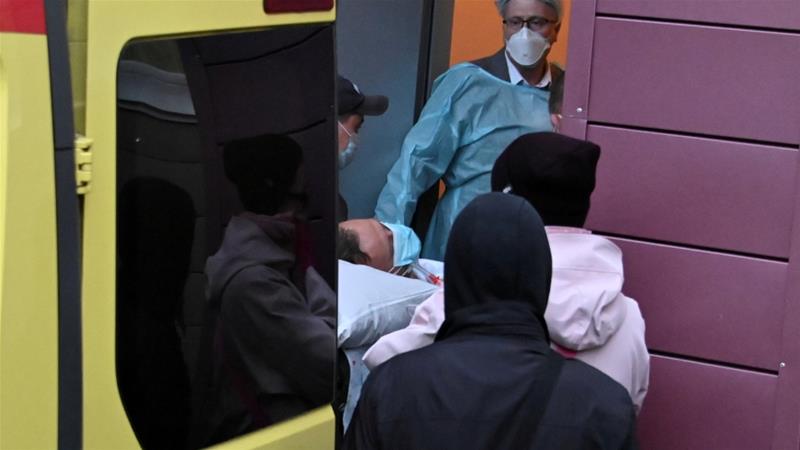What is the nerve agent Novichok?
A neurotoxicologist says much of what is known about Novichok is conjecture.
Novichok, the nerve agent that Germany says was used to poison Alexey Navalny, a critic of Russian President Vladimir Putin who is in a coma in a Berlin hospital, was developed in the Soviet Union in the 1970s and ’80s.
William Atchison, a neurotoxicologist at Michigan State University, said Novichok kills by disrupting communication between nerves and muscles or nerves in the brain.
“They work within minutes by paralysing the muscles responsible for breathing and stopping the heart. Seizures also occur. However, in some cases, if the dose is insufficient, death may be delayed or prevented but the victim continues to suffer from seizures, neuromuscular weakness, liver failure, and other damage,” said Atchison.
“To be clear, much of what is known about Novichok is conjecture. It is based on the limited information provided by two Russian chemists: one a defector, and the other who accidentally poisoned himself with a Novichok compound and died, though not immediately. It is his delayed clinical symptoms which have been the basis for understanding about what can happen when death isn‘t immediate.”
Here is the nerve agent explained:
– The name Novichok means “newcomer”. It is used for a family of highly toxic nerve agents with a composition slightly different from the better-known poison gases, VX and sarin.
– Novichok agents are believed to be five to 10 times more lethal than those substances, although there are no known uses before 2018, when Novichok was deployed in the UK on a former Russian spy and his daughter.
– Moscow is not believed ever to have declared Novichok or its ingredients to the Hague-based Organisation for the Prohibition of Chemical Weapons (OPCW), which oversees a treaty banning their use.
– The weaponisation of any chemical is banned under the 1997 Chemical Weapons Convention, of which Moscow is a signatory.
– In November 2019, members of the OPCW agreed to expand its list of banned “Schedule 1” chemicals to include Novichok agents. That ban went into effect on June 7, 2020.
– Novichok was made with agrochemicals, so its production could more readily be hidden within a legitimate commercial industry, according to US chemical weapons expert Amy Smithson.
– Russia and the United States once ran two of the largest chemical weapons programmes in the world. Russia completed the destruction of a stockpile declared to the OPCW last year. The US is in the final stages of destroying its own stockpile.
– However, publications about development and testing of Novichok in the 1990s raised US suspicions that the Soviet Union had a secret weapons programme, and did not declare its full stockpile when it joined the OPCW.
– Russia was once believed to possess thousands of tonnes of weaponised Novichok varieties and their precursors, according to a 2014 report by the US-based Nuclear Threat Initiative, a non-partisan group working to reduce the threat of weapons of mass destruction.
– The chemical “causes a slowing of the heart and restriction of the airways, leading to death by asphyxiation”, according to Professor Gary Stephens, a pharmacology expert at the University of Reading. “One of the main reasons these agents are developed is because their component parts are not on the banned list.”
– The UK says Russia used Novichok to poison former spy Sergei Skripal and his daughter Yulia in the British city of Salisbury two years ago. Russia has repeatedly denied any involvement in the attack, which the Skripals survived. One member of the public, Dawn Sturgess, was killed. Decontamination and recovery measures in the city cost millions of pounds.
Source: Read Full Article



